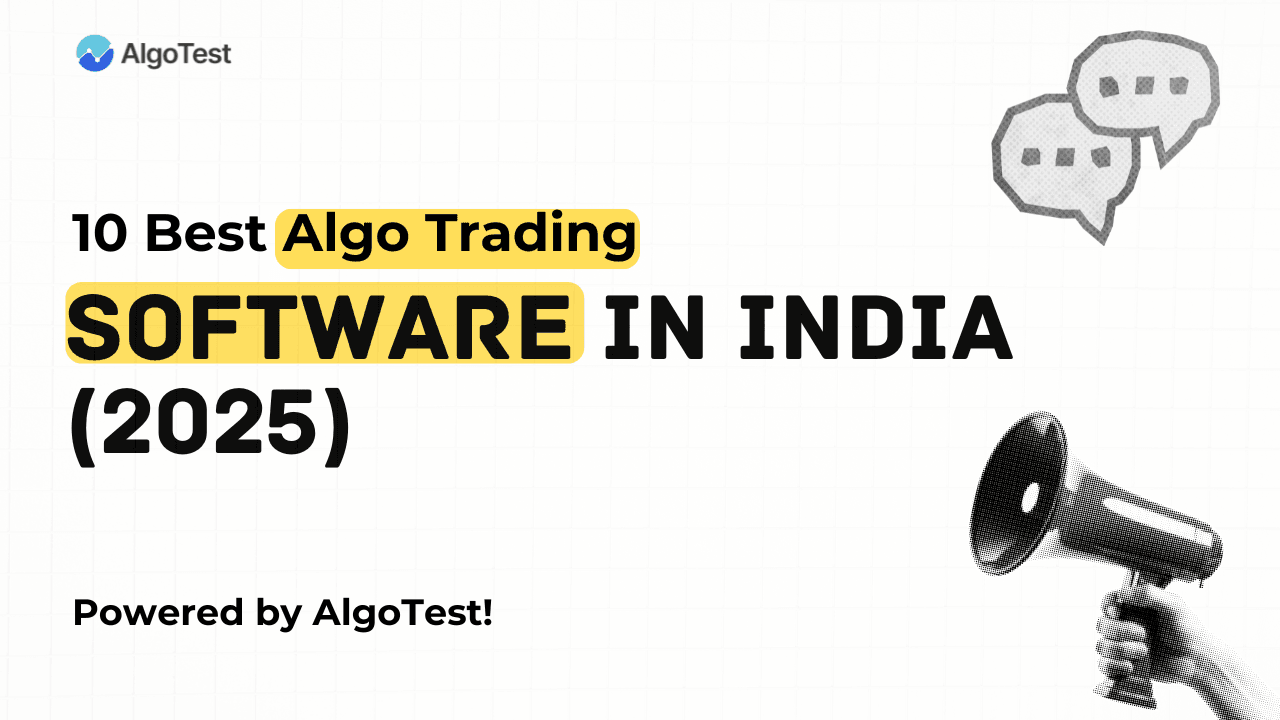"Wait... what if my deep-in-the-money call gets stuck at expiry and I'm too broke to pay for the shares?"
- A perfectly reasonable panic attack in our internal community chat
Why This Post Exists
During last week's internal Zoom session with folks from AlgoTest's vol trading community, someone noticed an options position I'd built on AlgoTest in a mid-cap stock. The obvious follow-up question was: "What if liquidity dries up across the chain and you can't square off before expiry? And what if you're like most of us - short on cash and long on optimism?" ;)
Well, I've never let a deep-ITM SSO (single stock option) hit expiry with an empty wallet, so I didn't have a bulletproof answer on the spot. That sent me down the rabbit hole of NSE circulars and broker rulebooks wherever documented.
Here's what I discovered.
How to Avoid Taking Delivery
Method 1: Sell the Corresponding Futures Contract
What you do: Go short one lot of monthly futures in the same stock, same expiry.
Why it works: The long call wants you to take shares; the short future obliges you to give shares. At expiry, the exchange nets the two positions and - chamatkaar - no stock changes hands.
Bonus insight: If the stock tanks through your strike on the last day, the future's delta of -1 picks up the slack, and you're actually better off thanks to the long gamma from your long call.
Method 2: Buy a Deep-ITM Put (Same Underlying & Expiry)
What you do: Buy a put that's already in-the-money.
Why it works: Exercise mechanics force the call to deliver shares to you and the put to deliver those same shares from you - deliveries cancel out perfectly.
Watch out: Both legs must be ITM at the closing bell. If the put goes OTM, you're back on the hook (though this is rare).
Method 3: Create a Call Spread by Shorting Another ITM Call
You have two sub-strategies here:
Short Higher Strike (Safer Option)
Example: Long ₹4,000 CE + Short ₹4,050 CE
- Scenarios:
- Spot < ₹4,000: Both calls expire OTM - no delivery
- ₹4,000 ≤ Spot ≤ ₹4,050: You'll need to take delivery (short call expires worthless, long call ITM)
- Spot > ₹4,050: Both legs ITM → deliveries offset → no shares
- Spot < ₹4,000: Both calls expire OTM - no delivery
Short Lower Strike (Riskier - Context Dependent)
Example: Long ₹4,000 CE + Short ₹3,950 CE
- If you already own the underlying stock:
- Scenarios:
- Spot < ₹3,950: Both calls expire OTM - no delivery, you keep your shares
- ₹3,950 ≤ Spot < ₹4,000: Short call ITM (you deliver your existing shares), long call expires worthless - covered call scenario
- Spot ≥ ₹4,000: Both calls ITM → you deliver shares via short call, receive shares via long call → net zero delivery
- Spot < ₹3,950: Both calls expire OTM - no delivery, you keep your shares
If you don't own the underlying stock:
- Scenarios:
- Spot < ₹3,950: Both calls expire OTM - no delivery
- ₹3,950 ≤ Spot < ₹4,000: Short call ITM (you must deliver shares you don't have), long call expires worthless → delivery hell
- Spot ≥ ₹4,000: Both calls ITM → deliveries offset → no net shares needed
- Spot < ₹3,950: Both calls expire OTM - no delivery
Key Takeaway: Higher-strike short call = safer; lower-strike short call = only if you're already holding the underlying stock.
And If You Do Nothing...
Here's the painful sequence of events:
- Auto-exercise: NSE automatically exercises your long ITM call; shares worth strike × lot size land in your broker's pool
- Ledger goes red: Contract value minus available balance equals margin shortfall - you're now negative
- Broker RMS takes over:
- Many brokers (e.g., Zerodha) will attempt an emergency square-off during the closing minutes
- If impossible, they'll offload the shares the next morning (T+1)
- Penalties kick in:
- Interest: ~0.05%/day on the debit balance
- Margin shortfall penalty: 0.5% of shortfall amount (under ₹1 lakh) or 1% (above ₹1 lakh), escalating to 5% after three consecutive shortfalls
- RMS charges: Flat ₹50–100 (broker-specific)
- Interest: ~0.05%/day on the debit balance
- Many brokers (e.g., Zerodha) will attempt an emergency square-off during the closing minutes
- You still pay STT & brokerage on both the acquisition and forced sale—roughly 0.2% of notional value right there
Bottom line: A neat little ₹8,000–10,000 dent in your account before breakfast, even if prices didn't move overnight.
Quick Reference Cheat Sheet
Scenario at Expiry | Net Delivery? | Cash Needed |
|---|---|---|
Unhedged long ITM call | Take full lot | 100% of notional |
+ Short futures | Zero | Margin as per exchange |
+ Deep ITM put | Zero (if put remains ITM) | Put premium only |
+ Higher-strike short call | Zero (if stock > short strike) | Margin as per exchange |
+ Lower-strike short call (no stock held) | Zero (if stock > long strike) | Margin as per exchange |
Final Takeaways
- Deep-ITM stock options are basically leveraged stock purchases - treat them with the respect they deserve.
- A simple futures hedge or opposite-side option eliminates delivery risk 99% of the time
- Always monitor T-4 to T-0 delivery margins - they jump from 10% to 100% in those crucial four trading days
- If you want the shares, great - just fund the account properly. Otherwise, line up an offset position early in the expiry cycle
- The moral of the story? Don't let a profitable options trade turn into an expensive lesson in settlement mechanics.
Happy (and penalty-free) trading!
References:
https://support.zerodha.com/category/trading-and-markets/trading-faqs/f-otrading/articles/policy-on-physical-settlement
https://zerodha.com/z-connect/general/policy-on-settlement-of-compulsory-delivery-derivative-contracts-update-oct-2019
https://support.zerodha.com/category/trading-and-markets/margins/margin-reporting-and-margin-penalty/articles/peak-margin-on-hedged-positions
https://support.zerodha.com/category/trading-and-markets/margins/margin-reporting-and-margin-penalty/articles/margin-shortfall-instances
https://www.paytmmoney.com/blog/physical-delivery-settlement-margin-option/



